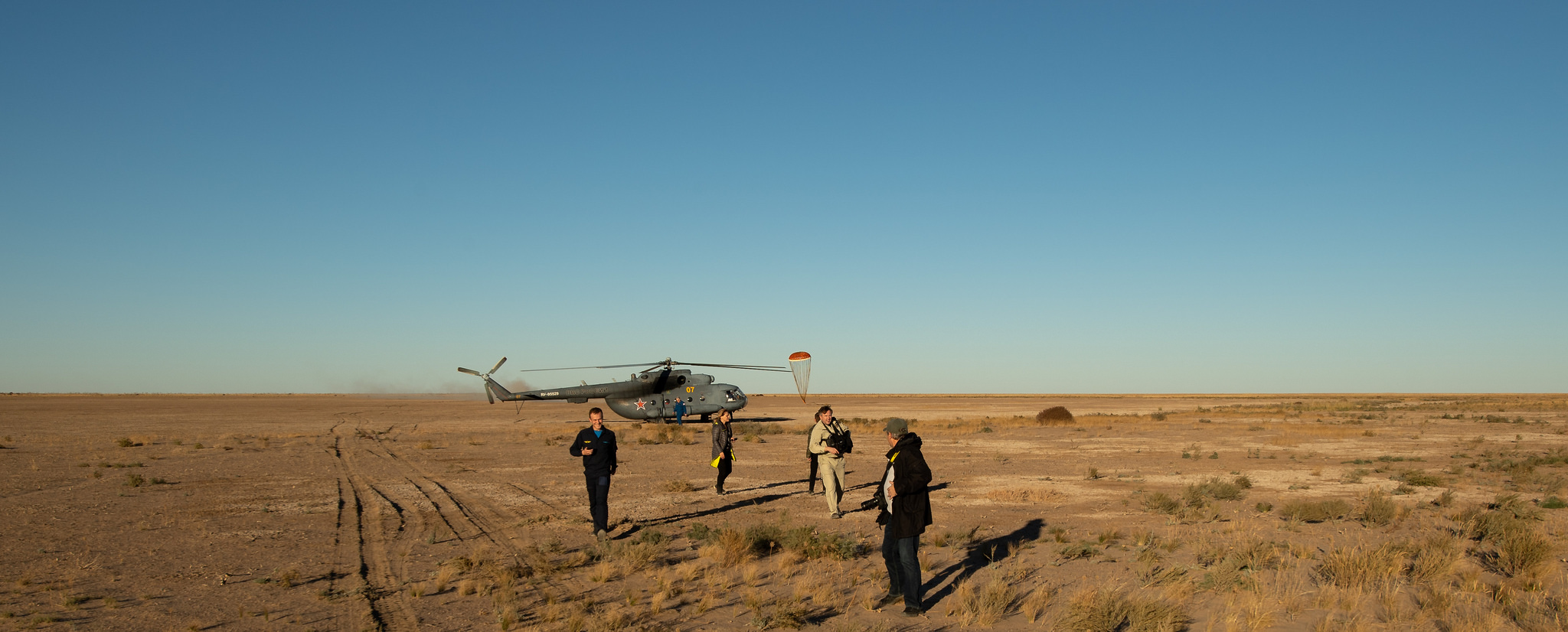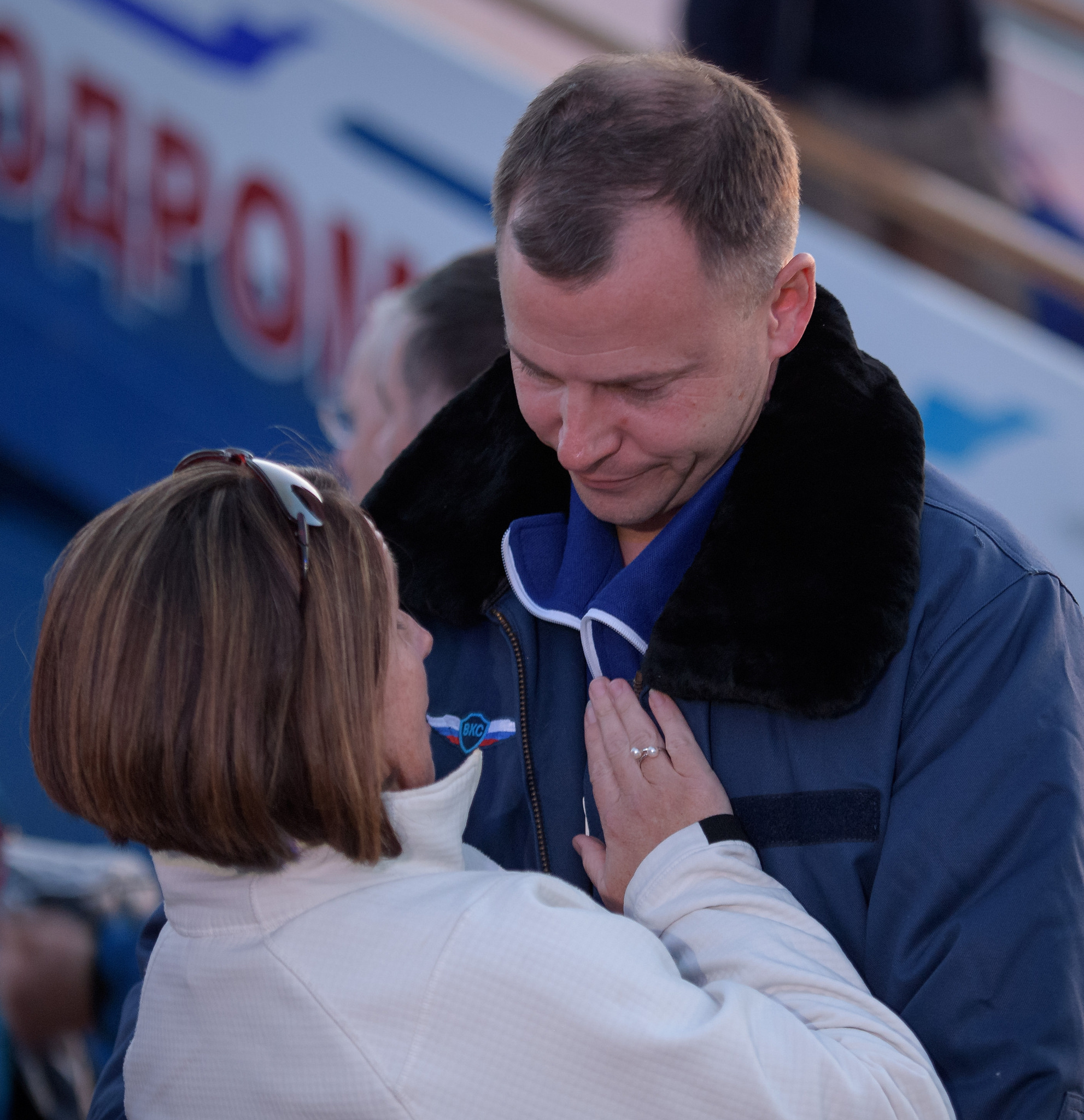Here's How Space Agencies Prepare to Rescue Astronauts During Soyuz Launch Aborts and Landings
When a Soyuz rocket blasted off from the Baikonur Cosmodrome in Kazakhstan on Thursday at 4:47 a.m. EDT (0847 GMT), everything seemed fine — but just in case it wasn't, search-and-rescue crews were stationed across the region, ready to jump into action.
And that's just what they did when, a couple minutes after the Oct. 11 launch, something went wrong with the rocket carrying NASA astronaut Nick Hague and Russian cosmonaut Alexey Ovchinin to the International Space Station. The launch was automatically aborted, sending the two crewmembers into an emergency ballistic re-entry.
"As you would expect, everyone was calm and worked through the emergencies as best they could, and that was good to see," former NASA astronaut Leroy Chiao told Space.com. "It all seemed to flow pretty smoothly." [In Photos: Space Station Crew's Harrowing Abort Landing After Soyuz Launch Failure]

Chiao flew on three space shuttle missions, then rode a Soyuz capsule to the space station for a six-month stay on the orbiting laboratory. His launches and landings all went smoothly, but he knows what it's like when something goes very wrong: on his last flight, his Soyuz experienced an anomaly about 650 feet (200 meters) away from the space station and began to speed up instead of slowing down.
"We almost reflexively just kind of jumped into it and started working on the problem," he said. He and his two crewmates had their emergency manuals out as well as the instructions that detailed standard procedure, and they were ready to handle the crisis. "Once you're safe, that's when you kind of take a deep breath, and the hairs on the back of your neck stand up," he said.
That's thanks to the rigorous training that all astronauts undergo before launch. "You spend most of your time on emergency and malfunction procedures, and that's because those are the things that are going to bite you," Chiao said. "You want to be able to almost reflexively execute them."
So Hague and Ovchinin reflexively did what they needed to do, triggering the ballistic re-entry mode that would rapidly pull them away from the troubled booster and all the fuel it carried. Once they began the landing process, it took a little over half an hour for them to touch down.
Get the Space.com Newsletter
Breaking space news, the latest updates on rocket launches, skywatching events and more!
But search-and-rescue crews were already prepared to track them down and help them out of their capsule long before the rocket even took off. For launches from Baikonur, preparing teams around those areas is primarily the responsibility of Russian space agency Roscosmos, NASA confirmed.
"The SAR [search and rescue] procedures are handled primarily by the Roscosmos team, but of course the appropriate international partners participate in the team and are there to support their agency's crew members," NASA spokesperson Kelly Humphries wrote in an email to Space.com, although he declined to provide additional information about the process.

Because any launch is carefully designed, it's possible to calculate where crewmembers might land depending on where they have to pull the trigger and separate from the rocket. For a landing crew, mission personnel draw up a circle about 12.5 miles (20 kilometers) across in which the crew should land if they deploy the parachutes as scheduled, depending on wind strength and direction. Predicting that area is more complicated for ballistic re-entries during launches and landings, of course. [Soyuz Landing Photos: Expedition 49 Returns to Earth]
"That circle's going to be bigger first of all," Chiao said, pointing to a 2003 landing that plopped astronauts about 275 miles (440 km) off course. But it's still possible to do. "They're going to stage a rescue crew out there with helicopters ready to start looking for these guys if they had to go ballistic."
That means mission staff can deploy crews across the targeted landing area and areas where a ballistic re-entry would deposit the crew. When he landed on a Soyuz in 2005, Chiao said that the team that met him and his colleagues was likely about 50 people, including medical personnel, helicopter pilots and people to help the astronauts out of the capsule.
A tweet posted by astronaut Alexander Gerst, currently aboard the space station, thanked the search-and-rescue crew for their work picking up Hague and Ovchinin, saying that more than 1,000 people were on hand across the region. Chiao said that number sounds plausible, since there are several different teams posted in different locations.
And after the anomaly, he said Hague and Ovchinin's landing went pretty smoothly. NASA has said that search-and-rescue crews were able to meet them on landing, and that the astronauts were quickly taken out of the capsule to check their condition.
That isn't always the case. "Historically in the Russian experience they've had some pretty spectacular search and rescue events," Chiao said. "The rescue forces have done some incredible things over the years."
That doesn't just refer to the landing that touched down hundreds of miles off course. One capsule didn't just land in an unexpected place, it crashed through a forest, tumbled down a mountain, and only a parachute snagged on a tree kept it from falling off a cliff. The astronauts had to spend the night in the forest, then ski out. It's on account of the wolves they heard howling overnight that Soyuz capsules are stocked with a pistol.
On another occasion, a capsule broke through a frozen lake and tipped upside down, leaving the astronauts on board hanging from straps for hours. Rescue crews tracked them down and lifted the capsule out of the water, but it was so heavy they kept bumping along the ice's surface. Rescuers expected the astronauts couldn't have survived the experience — but they had.
And as to whether the incident shook his faith in the safety of space travel, Chiao said he isn't concerned.
"This business is not without risk, and never will be any time you're sitting on all that fuel and high-speed turbo pumps and fire," Chiao said. And he predicted the next launch would be even safer than usual. "You can bet that everybody involved is going to be extra cautious on the next launch because of this incident."
Email Meghan Bartels at mbartels@space.com or follow her @meghanbartels. Follow us @Spacedotcom and Facebook. Original article on Space.com.
Join our Space Forums to keep talking space on the latest missions, night sky and more! And if you have a news tip, correction or comment, let us know at: community@space.com.

Meghan is a senior writer at Space.com and has more than five years' experience as a science journalist based in New York City. She joined Space.com in July 2018, with previous writing published in outlets including Newsweek and Audubon. Meghan earned an MA in science journalism from New York University and a BA in classics from Georgetown University, and in her free time she enjoys reading and visiting museums. Follow her on Twitter at @meghanbartels.









